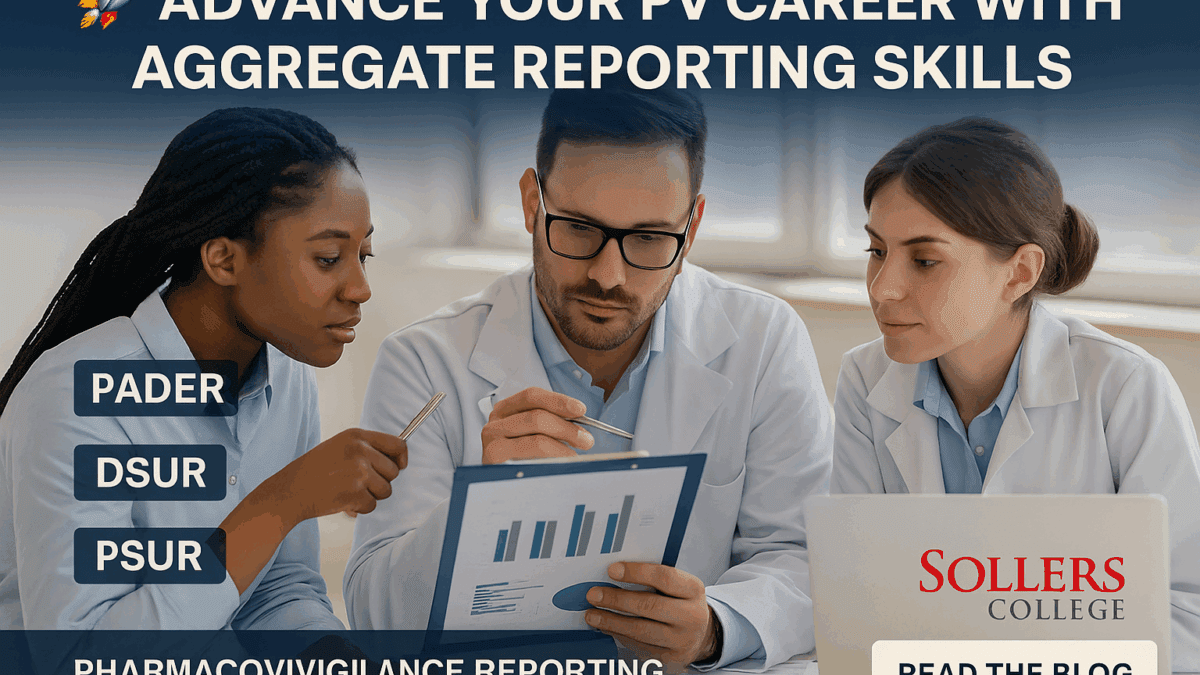
In the dynamic world of pharmacovigilance (PV), understanding aggregate reporting is no longer optional—it’s essential. As global regulatory agencies tighten compliance requirements, pharmaceutical companies rely on skilled professionals who can compile, analyze, and report drug safety data over time.
Whether you’re an experienced PV professional or transitioning from a healthcare or life sciences background, mastering aggregate reporting can dramatically enhance your value and open doors to international pharma roles.
What Is Aggregate Reporting?
Aggregate reporting in PV involves systematic evaluation of adverse event data over a defined period to monitor the safety profile of a drug. Unlike individual case safety reports (ICSRs), which address single incidents, aggregate reports present a broader safety overview, helping regulatory authorities assess benefit-risk balance at a population level.
These reports are critical for:
- Ongoing risk assessment
- Signal detection
- Regulatory compliance
- Informing healthcare professionals and patients
Common Types of Aggregate Reports
Here are the most widely used aggregate reports required globally:
- PADER (Periodic Adverse Drug Experience Report)
- Used In: U.S. (FDA)
- Frequency: Quarterly & annually
- Includes: Summary of adverse drug experiences, analysis of ICSRs, literature findings, sales data
- DSUR (Development Safety Update Report)
- Used In: Globally (during clinical trials)
- Frequency: Annually
- Includes: Ongoing clinical trial data, safety findings, risk-benefit analysis
- PSUR (Periodic Safety Update Report) / PBRER (Periodic Benefit-Risk Evaluation Report)
- Used In: EU and other ICH regions
- Frequency: Depends on product age
- Includes: Cumulative safety data, sales data, benefit-risk assessment
Each report demands strong analytical skills, regulatory knowledge, and attention to detail—making trained professionals highly sought after.
Why Aggregate Reporting Is a Must-Know for Global Pharma Careers
- High Demand, Low Supply: Skilled professionals in aggregate reporting are in short supply globally, especially in the U.S., Europe, and Canada.
- Global Regulatory Focus: Agencies like FDA, EMA, and PMDA increasingly require detailed aggregate reports to assess product safety.
- Career Growth: Positions like Aggregate Report Writer, PV Scientist, and Risk Management Specialist are well-compensated, often exceeding $90,000/year in the U.S. (Source: Glassdoor, 2024)
- Remote Opportunities: Many roles are hybrid or fully remote, offering flexibility for international professionals.
Who Should Learn Aggregate Reporting?
- Pharmacovigilance Associates
- Pharm.D/B.Pharm/M.Pharm professionals
- Clinical Research Associates
- Healthcare professionals switching to drug safety
- Life Sciences graduates aiming for global PV careers
How to Get Started: Training Matters
A structured aggregate reporting training program is key to mastering:
- ICH E2C & E2F Guidelines
- DSUR, PSUR, and PADER report structure
- Narrative summaries and data interpretation
- Safety database (e.g., Argus) familiarity
- Regulatory timelines and compliance best practices
Recommended Courses (USA):
- Advanced Aggregate Reporting in PV – Sollers College
- Pharmacovigilance & Drug Safety Certificate – Drug Safety Alliance
- Global PV Reporting Workshop – DIA Learning
Final Thoughts
Aggregate reporting isn’t just a regulatory checkbox—it’s a strategic function that shapes the lifecycle of a pharmaceutical product. If you’re serious about climbing the ladder in global pharmacovigilance, learning to write and interpret PADERs, DSURs, and PSURs will future-proof your career.



